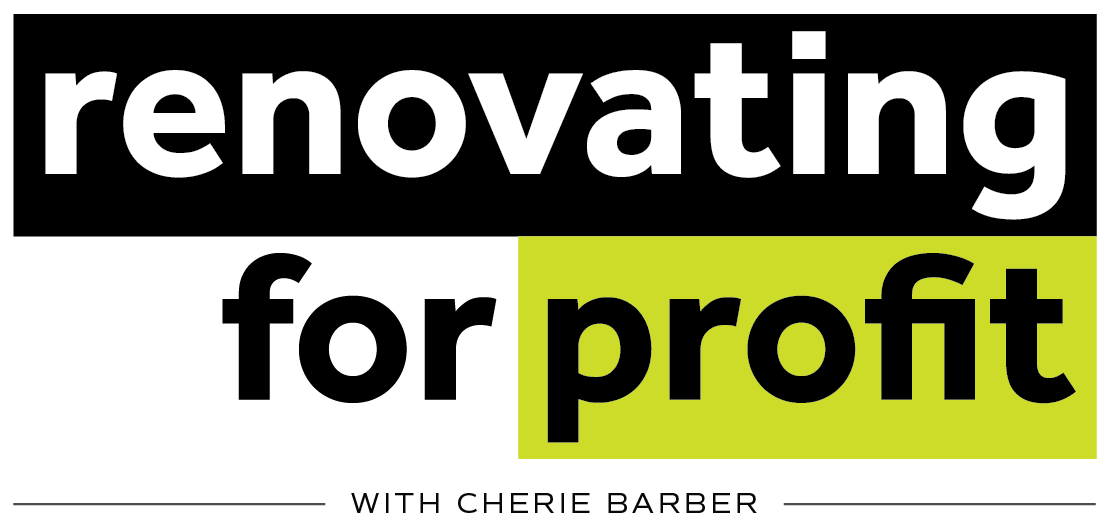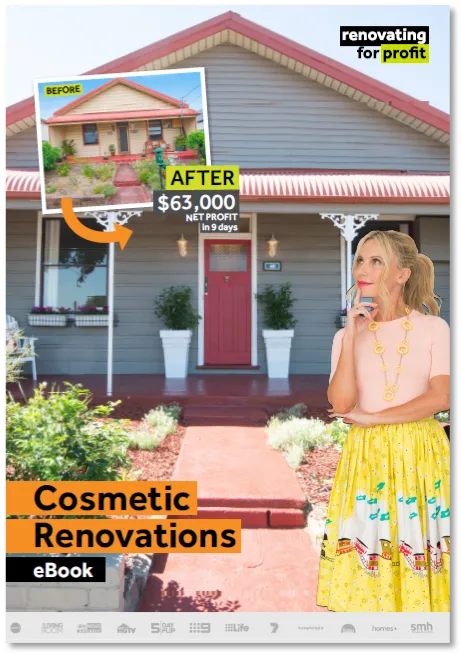The top five myths of small developments exposed!
On the brink of launching our new online course, Small Developments For Profit, I’d like to tackle some of the myths around property development. It’s neither scary nor overly risky – as long as you’re armed with the right knowledge, tools and skills. And the profits can be staggering.

We’ve engaged one of the foremost experts in the property development field, Bob Andersen, to develop our comprehensive online course. It comes with calculators, due diligence checklists, instructional videos, templates of key documents, and all the guidance you’ll need to confidently undertake a small development.
So let’s look at some of the common “mental hurdles” that would-be developers need to overcome.
Myth #1
I don’t have enough money to do a small development project

You do not need large reserves of cash to undertake a small development. Tapping into finance that is not necessarily your own is one of the strategies developers use to fund their projects. Once you find a development and have done all the feasibilities to make sure the project stacks up financially, you can investigate options like joint ventures or property development finance.
Before signing on the dotted line for the site you’ve selected, you will need to have funding lined up for your project. There are two types of finance here — one to buy the property and a slightly different kind to get the project financed once you have the approvals. You need to get this right. Our Small Developments for Profit course will show you how to access the funds you need. We will also be sharing the secrets of getting the right kind of financing on the most advantageous terms.
Here’s my own personal example of pulling off a major project with zero finance. This is called a joint venture with a money partner (or a debt partnership).
In my first year in property, I came across a waterfront site in Balmain, Sydney, with an asking price of $2.7 million, which was way beyond my means. My research indicated that the property could be sub-divided for a profit, however banks and lenders would have rejected my loan application outright as I had chucked in my job and had no deposit because my money was invested elsewhere.
I outlined the opportunity to a high-income earning friend and we joined forces as debt partners. Essentially, he financed all of the project costs and I did all of the leg work to take the project through Council as well as Land and Environment Court.
Under our agreement, we shared liability on the project and split the profits equally. Rather than running a full build, the property was flipped as a DA approved site which made it more valuable to potential purchasers. As I lived in the property, I was able to claim it as my principal place of residence (PPOR).
As soon as we sold, every cent of my debt that my partner’s outlaid was repaid and the small development profit was split down the middle. From that deal we cleared $750,000 profit and my take was $375,000.
Myth #2
I don’t have the skill set to do a small development project
Anyone can acquire the necessary skills once they learn what is required. It mainly boils down to two core skills:
- Managing people
- Managing processes

It’s a matter of surrounding yourself with the right team of experts and delegating managerial responsibilities. Take, for example, the architect and builder. Rather than deal with all the consultants individually (e.g, building certifier, civil engineer, surveyor, etc) you can appoint the architect as the lead consultant so it’s their responsibility to manage all the sub-contractors.
You also need to be on top of all the processes required to steer the project from conception to conclusion.
myth#3
There’s too much risk as a developer
If you don’t know what you’re doing and go in blind, then yes, it’s very risky. But like any venture you embark on where there’s a lot of money at stake, you need to mitigate the risk with an intensive, robust set of due diligence steps. You need to know how to size up potential developments, then run the numbers to make sure they stack up financially. These are the strategies and tools you need to acquire.
Regardless of market conditions, a financial feasibility showing a realistic rate of return provides a degree of certainty you’ll make money from the project.

Residential property development provides several entry-level opportunities that don’t exist with commercial, industrial or retail developments.
Entry-level options include:
- splitting a piece of land in two,
- building a duplex,
- building two townhouses behind a house, etc.
Entry-level developments like these require less financial investment and are a great way to “cut your teeth” before scaling up to larger developments.
Myth #4
I need to give up my day job to become a property developer

No, you don’t. In fact, I encourage people new to property development to keep their day job until (or if) it becomes financially expedient to devote themselves full-time to finding and developing projects. That’s why delegating duties and taking on the role of overall project manager is the ideal strategy.
Once you are reasonably clear on your strategy it’s important to seek professional advice to establish the correct ownership structure, ideally prior to entering a contract to purchase the development site.
Myth #5
Making money depends on the property market at the time

Just as in buying and renovating, trying to find the perfect time in the property market for a small development project is not where your focus should be. Let’s see why. Back in the early 1980s, land was relatively inexpensive, interest rates were very high (over 20% p.a.), construction prices were low, and sales prices were also low. These days land is more expensive, interest rates are much more affordable, construction prices are relatively high, but so are sales values. So it’s swings and roundabouts.
The three pillars of success that apply in any market for a small development are:
- Perform conservative and thorough financial feasibilities. Don’t assume any growth in sales values over the project and make sure you perform some “what-if” calculations to absorb inevitable curve balls.
- Develop product that is in demand with a point-of-difference to the competition.
- Ensure you have financial contingencies.
When you manufacture your own property at cost, not only do you keep the development profit, but you also have less debt and receive an increased rental yield as you’ve effectively purchased the property at cost rather than retail. You will generally be cash flow positive after tax thanks in part to the substantial depreciation tax benefits that come with new property. And because you’re manufacturing growth upfront, you don’t have to wait for the market to rise. That’s merely a bonus.
FACT FILE
There are several types of residential developments:
- Apartments – Attached dwellings on strata title that are often attached to adjoining dwellings on both a horizontal and vertical plane.
- Houses – Detached dwellings each on their own title.
- Land – generally undertaken by dividing a piece of land into smaller pieces of land each on their own title.
- Townhouses – Generally attached dwellings on strata title that are attached to adjoining dwellings on a vertical plane (i.e. through the walls).
- Specialised – Includes other forms of residential property such as holiday, retirement, serviced apartments, student accommodation, micro apartments, etc.
Being open to developing different types of residential property will expand the range of opportunities available to you, and it can even lead to greater profits when you are able to develop and deliver the type of project that is most in-demand by the market.
TOP TIP
Once you are reasonably clear on your strategy it’s important to seek professional advice to establish the correct ownership structure, ideally prior to entering a contract to purchase the development site. Things to be considered include your disposal strategy, asset protection, capital gains tax, GST registration, income tax, land tax and stamp duty.





